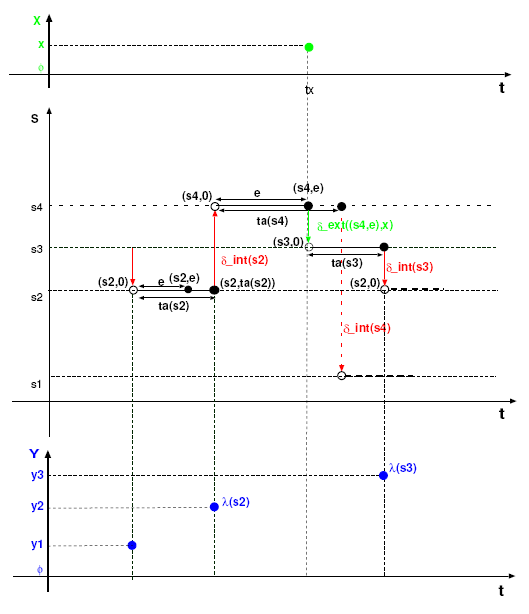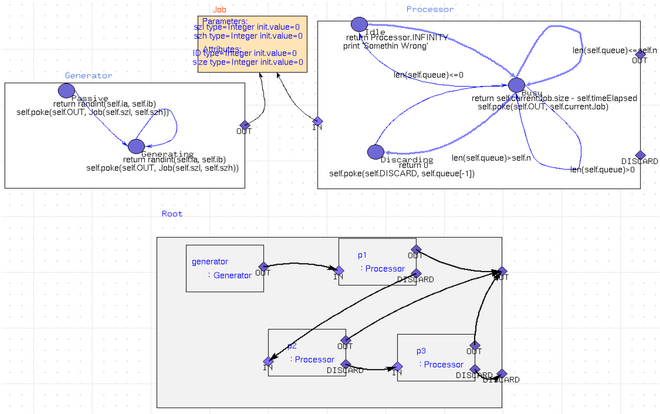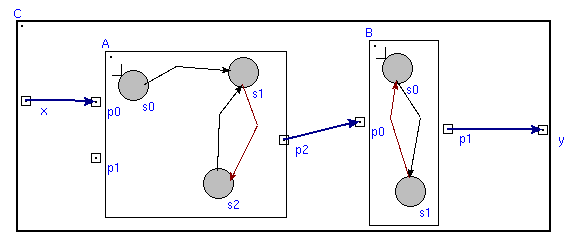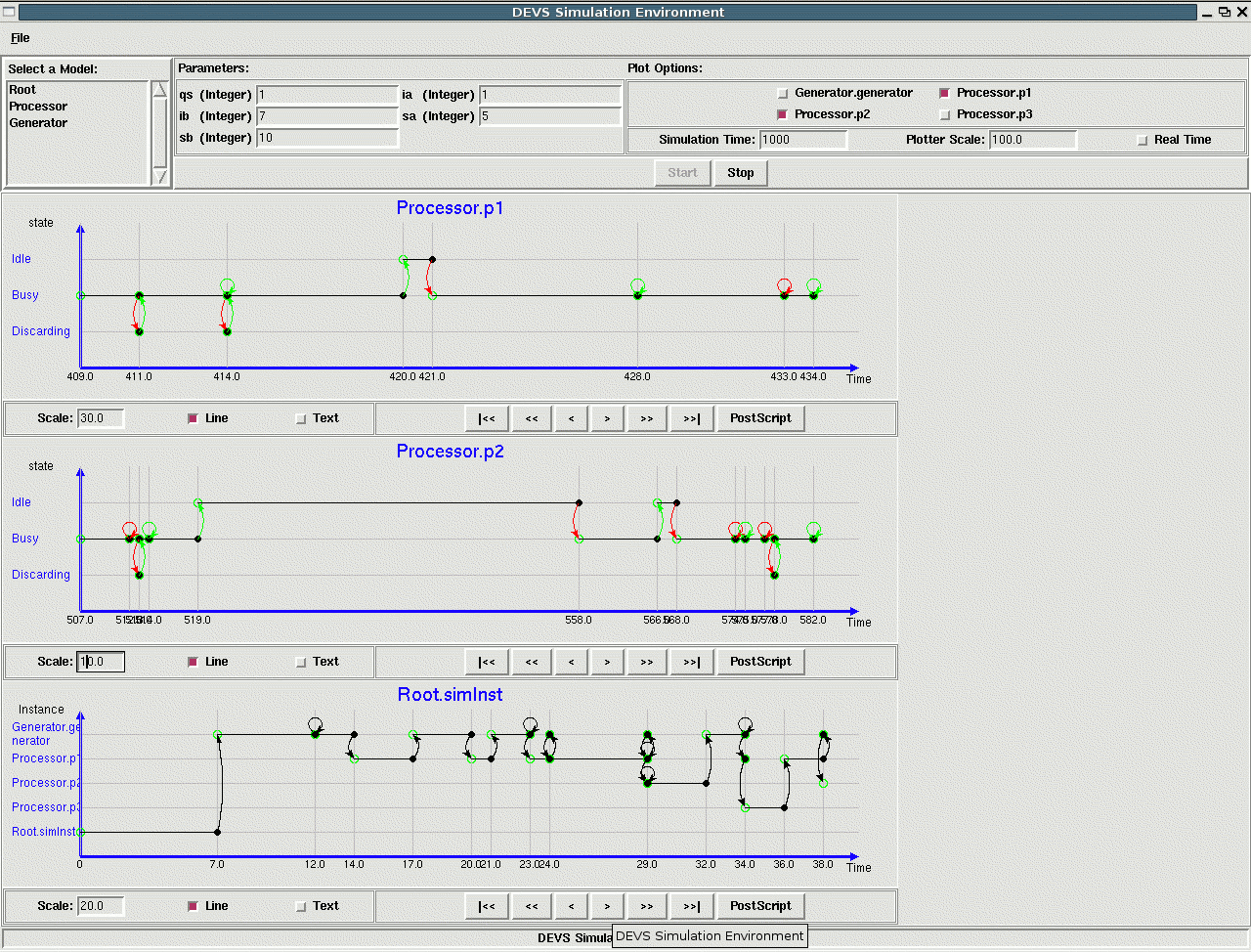
The MSDL's ongoing contributions to research and standardization on Bernard Zeigler's DEVS formalism are:
To allow for meaningful re-use and exchange of DEVS models as well as to support inter-operability of DEVS simulators (for example, for distributed simulation), it is necessary to standardize DEVS model syntax, semantics as well as simulator interfaces and implementation. It is also necessary to develop multi-platform modelling and simulation tools, and model libraries.
See the DEVS standardization group page for an international effort to standardize various aspects of DEVS.
HV's presentation at the 2001 Winter Simulation Conference DEVS Standards Group meeting introduces the MSDL views and intiatives.
PythonDEVS was developed as a lightweight tool for teaching DEVS and as a basis for research into the finer details of DEVS semantics as well as into DEVS variants.
The following are all you need to get started with PythonDEVS:
A report [pdf] on the construction of the PythonDEVS simulator. The example in this report has been expanded and can be found in queueModel.py described below. Unless you are interested in the design of the simulator, you should go directly to the examples described below.
The pydevs.tgz archive. It contains:
Spencer Borland has developed a real-time version of PythonDEVS called RT-PythonDEVS. RT-PythonDEVS allows for the real-time execution of DEVS models. As such, it serves as a virtual machine for the execution of DEVS specifications. RT-PythonDEVS was developed in the context of Spencer's M.Sc. thesis in which Statechart specifications are transformed into equivalent DEVS specifications.
Bill Song used meta-modelling in AToM3 to develop DEVSenv, a visual modelling and simulation model generation environment for DEVS. Have a look at Bill's project page. Currently, PythonDEVS is generated, but soon ADEVS will be supported. Full target-language-independence will come when a neutral modelling language is completed.

Note how the visual representation of Atomic DEVS models assumes a separation between "mode" states (visualised as circles) and "variable" states (encoded as attributes). This, as well as how to visually represent external transitions, is based on Ernesto Posse's DEVS in AToM3.

Ernesto's prototype supports truly hierarchical modelling with hiding of sub-models, visual modelling of atomic DEVS' behaviour and PythonDEVS code generation. This work was presented at the 2003 SCSC [pdf].

| Maintained by Hans Vangheluwe. | Last Modified: 2006/08/03 01:27:19. |